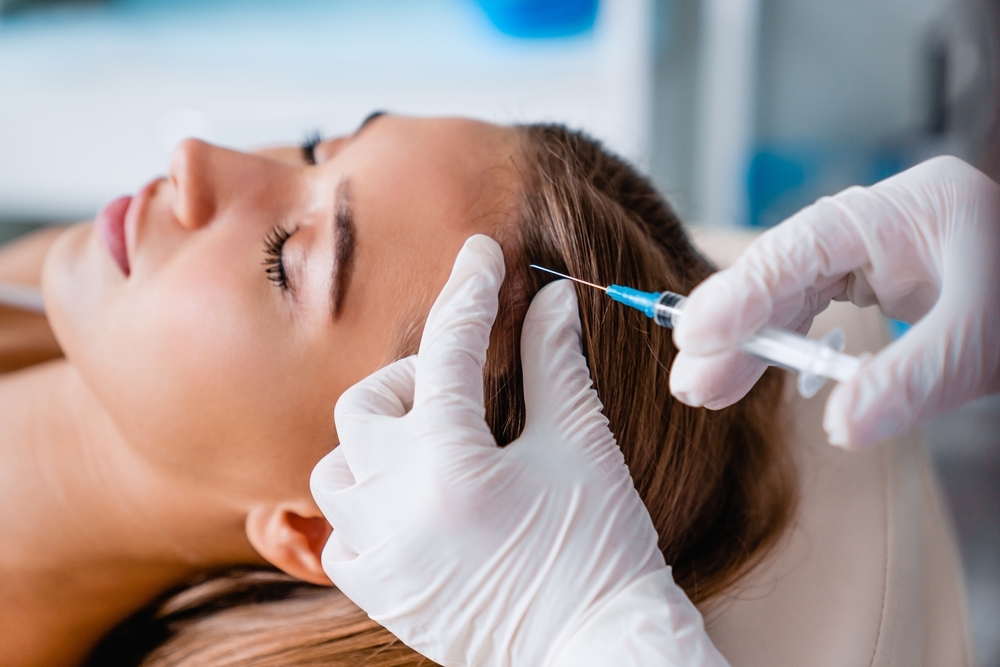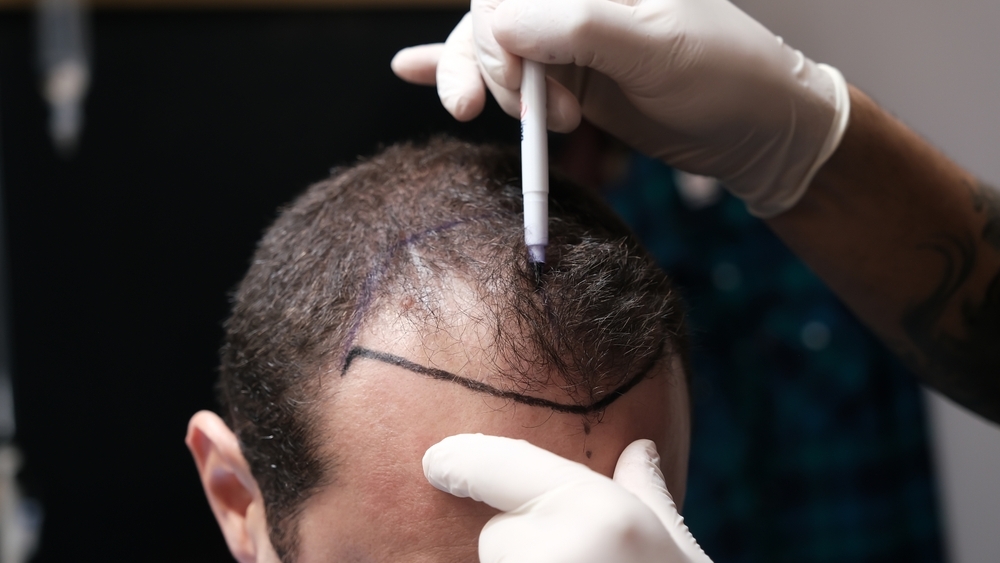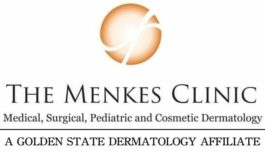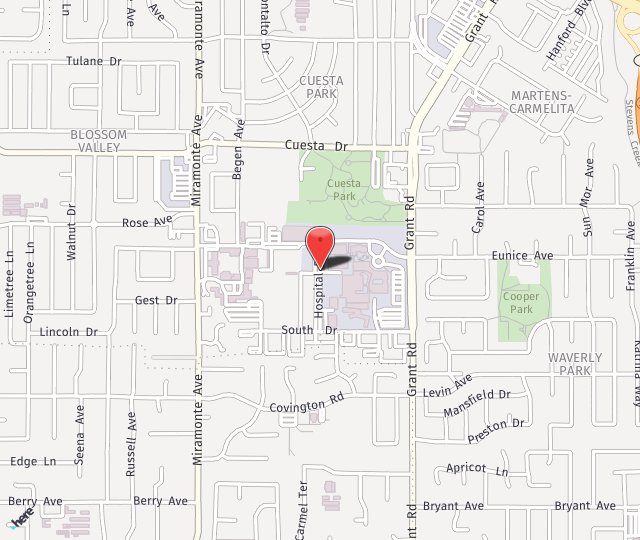Hair restoration has evolved dramatically over the past few decades, offering new hope to so many people experiencing pattern baldness, thinning hair, or other forms of alopecia. Thanks to these advances, patients have access to both surgical and non-surgical options that can effectively address various stages and types of hair loss, making the decision process both exciting and potentially overwhelming.
Keep reading to learn about the differences between these approaches, their respective benefits and limitations, and which option might work best for your specific situation.
What Options Are There for Hair Restoration?
There is a wide range of treatments designed to slow hair loss, stimulate new growth, or transplant existing hair to areas of thinning or baldness.

Non-surgical options typically focus on medical treatments, topical applications, and innovative therapies that work at the cellular level to improve hair health and density.
Surgical methods involve physically relocating healthy hair follicles from donor areas to recipient sites, providing immediate structural changes to hairline and density.
The choice between surgical and non-surgical hair restoration often depends on various factors. For example, these factors may include the extent of hair loss, age, lifestyle preferences, budget considerations, and personal goals for treatment outcomes.
For some patients, combining both approaches may provide the most comprehensive and long-lasting results, with non-surgical treatments supporting and maintaining surgical improvements over time.
Non-Surgical Hair Restoration Methods
Medical Therapies
These include DHT-blocking medications such as finasteride (Propecia) and dutasteride (Avodart), which work by blocking the pathway that converts testosterone into dihydrotestosterone (DHT)—the hormone responsible for male pattern baldness. Finasteride blocks one of the enzymes involved in DHT production, while dutasteride blocks both, leading to greater suppression of the hormone but also a higher potential for side effects.
Minoxidil (Rogaine) is another option in a foam, liquid, or pill that improves blood flow to hair follicles and works particularly well for women with overall thinning, though both men and women can use it safely with other treatments and typically see results within three to six months.
Regenerative Therapies
These treatments use your body’s natural healing factors to stimulate hair growth and include PRP, Acell, and ATP. Most patients need several treatments spaced about a month apart, then maintenance sessions every few months to help thicken existing hair, wake up sleeping follicles, and improve results when combined with other treatments.
Light Therapy
Low-level light therapy uses LED lights to stimulate hair follicles and improve hair growth. The treatment is painless and can be done in the office or at home with special devices.
You’ll need consistent treatments over several months to see results. Many patients notice their hair feels thicker and looks fuller after several months of treatment.
Dr. Paul Rose, a dermatologist at Golden State Dermatology, emphasizes the importance of a comprehensive non-surgical approach:

“Non-surgical hair restoration has advanced significantly, offering patients effective options that don’t require the commitment or recovery time of surgery. We often see excellent results when combining prescription medications with treatments like PRP therapy and low-level laser therapy. The key is starting treatment early, before significant follicle miniaturization occurs, and maintaining consistency with the recommended regimen. Many patients are surprised by how much improvement they can achieve with non-surgical methods alone, especially when we customize the treatment plan to their specific type and stage of hair loss.”
Oral Medications
Propecia is the brand name for finasteride, a medication that works by blocking the enzyme that converts testosterone into DHT. Lowering DHT levels in the scalp helps slow hair loss and, in many cases, encourages regrowth. Whether prescribed as Propecia or in its generic form, the active ingredient is the same and works identically. This treatment tends to be most effective for thinning at the crown and mid-scalp areas.
Some patients may require a stronger option, such as dutasteride (Avodart). Unlike finasteride, which blocks one type of DHT-producing enzyme, dutasteride blocks both, resulting in a more significant drop in DHT levels. It’s often recommended for those who don’t see sufficient improvement with finasteride alone or who are experiencing more aggressive patterns of hair loss.
Another option is oral minoxidil, a less common but sometimes highly effective treatment. While minoxidil is widely known as a topical solution, taking it orally can benefit certain patients—particularly women with diffuse thinning across the scalp. Because oral minoxidil can affect blood pressure, it requires close monitoring and regular follow-ups with a dermatologist.
Hair Prosthetics
Hair prosthetics provide a nonsurgical option for patients seeking immediate restoration. Unlike older wigs or toupees, today’s systems are engineered with advanced materials that replicate the appearance and movement of natural hair. They can be customized to match a patient’s hair color, density, and style, making them a practical solution for those who are not surgical candidates or prefer to avoid the risks and recovery associated with transplantation.
This approach offers both versatility and convenience. Prosthetics can be adjusted over time as hair patterns change and deliver full coverage without the delay of medical therapies. For patients prioritizing rapid, reliable improvement without invasive procedures, hair prosthetics represent an effective alternative within the spectrum of hair restoration options.
Surgical Hair Restoration Options
FUE (Follicular Unit Extraction)
FUE is a hair transplant method where individual hair follicles are removed from the back of the scalp using tiny punches. The resulting scars are small, dot-like marks that heal quickly and are barely noticeable—even with very short hairstyles.
Recovery is faster than with other surgical techniques, and most patients can return to work within a few days. This approach is especially effective for younger patients who prefer to keep their hair very short, as it avoids the linear scar associated with traditional strip methods.
Strip FUT (Follicular Unit Strip Surgery)

With strip FUT, a thin strip of scalp is removed from the back of the head and carefully divided into individual hair follicles. This method allows more grafts to be harvested in a single session, making it an excellent choice for patients who need significant hair restoration. It is ideal for people who wear their hair longer than half an inch and don’t mind a linear scar that is not readily visible.
With a ledge closure technique developed by Dr. Rose, even the linear scar can be virtually invisible, allowing some patients to keep their hair very short. FUT also takes less time to perform and is typically less expensive than other methods, making it a cost-effective option for extensive hair restoration.
Scalp Micropigmentation (SMP)
SMP is like a specialized tattoo that creates the look of tiny hair follicles on your scalp. It makes your hair appear fuller and can help define your hairline or cover scars from previous procedures.
This treatment works well by itself if you like a buzz-cut look, or it can be combined with hair transplants to make them look fuller. You’ll need several sessions, and touch-ups every few years to keep it looking fresh.
Factors to Consider When Looking at Hair Restoration Options
Extent and Pattern of Hair Loss
Early-stage hair loss often responds well to non-surgical treatments, while advanced baldness may require surgical intervention for meaningful restoration. Patients with diffuse thinning might benefit more from non-surgical approaches, while those with well-defined bald areas are often good candidates for hair transplantation.
Age and Future Hair Loss Progression
Younger patients may benefit from starting with non-surgical treatments to slow progression before considering surgery, while older patients with stable hair loss patterns might be ideal candidates for immediate surgical intervention. Your dermatologist will consider your family history and current progression rates when advising you on timing and treatment selection.
Lifestyle and Recovery Considerations
Non-surgical treatments typically require minimal downtime but demand long-term commitment to daily medications or regular treatment sessions. Surgical procedures involve initial recovery periods with activity restrictions but offer more permanent structural changes. Patients with demanding professional schedules or active lifestyles may prefer non-surgical options, while those seeking dramatic, one-time improvement might choose surgery.
Budget and Long-term Costs
Non-surgical treatments often have lower upfront costs but require ongoing expenses for medications, maintenance treatments, and follow-up care. Surgical procedures involve higher initial investment but may prove more cost-effective over time, especially when combined with minimal maintenance therapy. Insurance typically doesn’t cover cosmetic hair restoration, making financial planning an important consideration.
Dr. Paul Rose discusses the decision-making process for hair restoration:
“Choosing between surgical and non-surgical hair restoration isn’t always an either-or decision, and the best approach often involves combining both methods strategically. We evaluate each patient’s specific pattern of hair loss, lifestyle factors, expectations, and long-term goals to develop personalized treatment plans that maximize both immediate and lasting results. Some patients start with non-surgical treatments to stabilize their hair loss and then add surgical procedures for areas that need more dramatic improvement, while others begin with surgery and use non-surgical methods to protect their investment and maintain optimal results over time.”
The decision between surgical and non-surgical hair restoration should be made in consultation with an experienced dermatologist who can properly evaluate your individual situation and goals.
If you have questions about your skin, schedule an appointment at The Menkes Clinic today!

